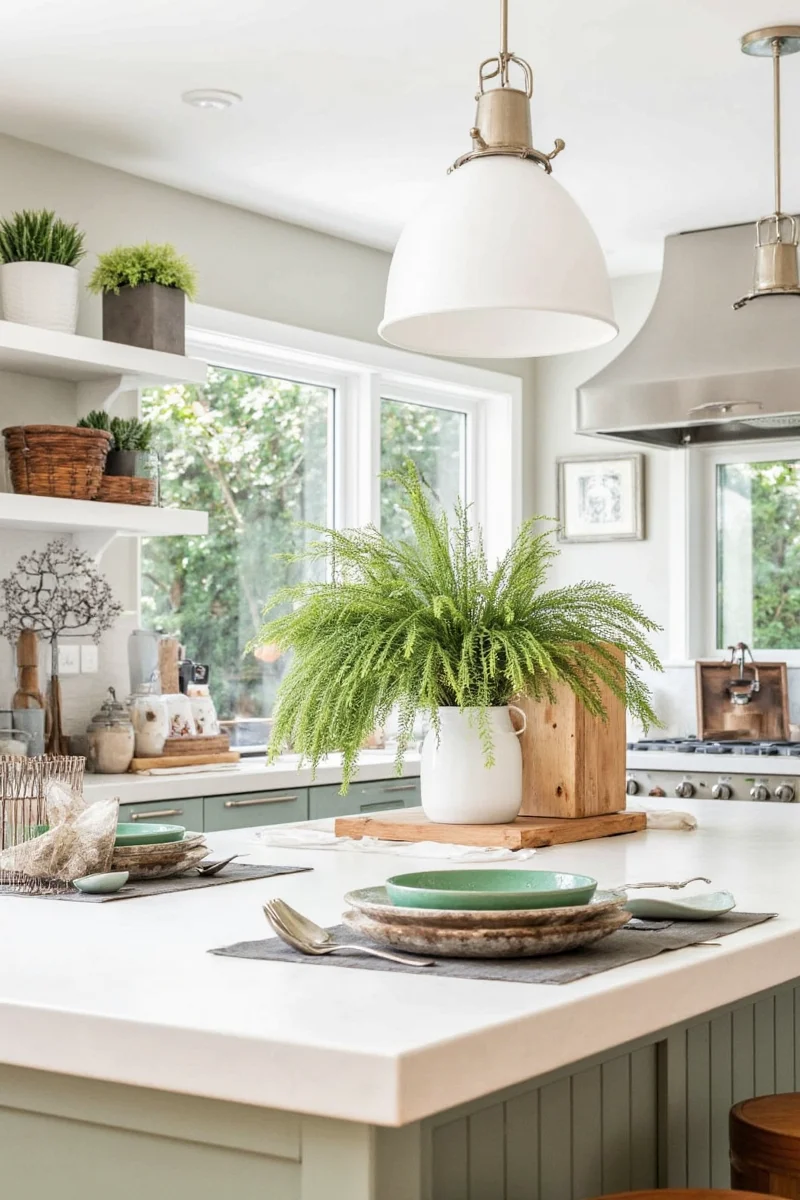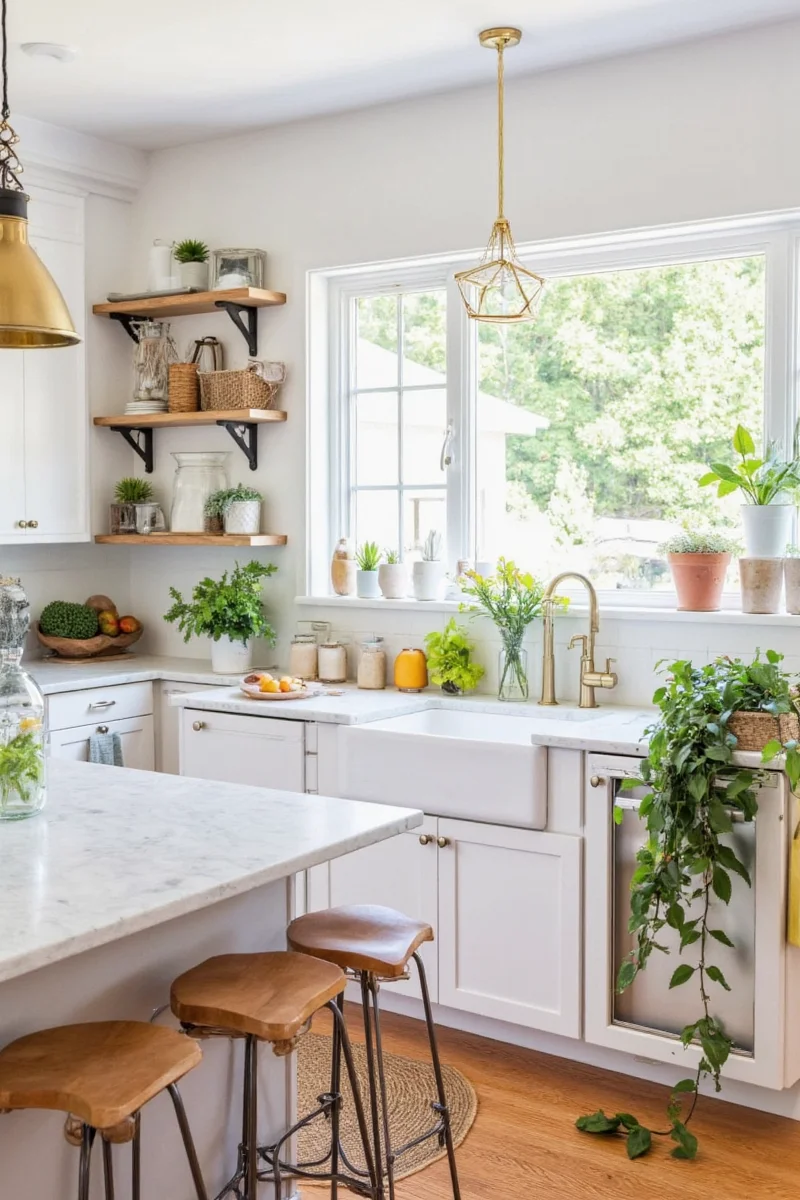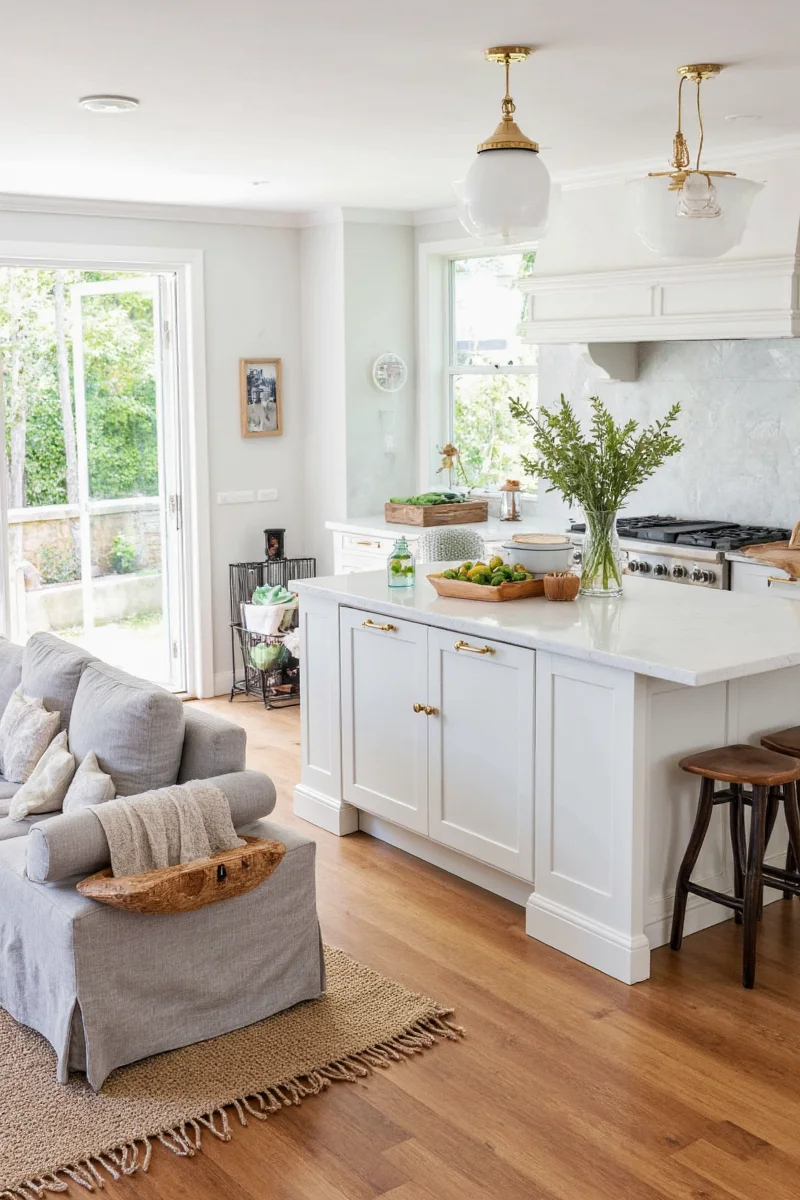10 Greenery Decor Ideas That Make Your Kitchen Feel Like a Garden (Even Without a Yard!)
Welcome to your go-to guide for family-friendly greenery decor in the kitchen — because yes, you can have fresh herbs, lush plants, and adorable leafy accents without turning your cooking space into a jungle.
Whether you’re a design-savvy pro or just trying to make your kids stop calling your kitchen ‘boring,’ this post has something for everyone. Let’s dig into practical plant placements, kid-safe options, and tips that’ll make your kitchen greener than your neighbor’s jealousy over your new decor.
Table of Contents
- Why Greenery in the Kitchen is a Game-Changer
- Kid-Safe & Pet-Friendly Plant Choices
- Best Spots for Plants in Your Kitchen
- Herb Garden Magic: Practical + Pretty
- Stylish Planters That Match Any Kitchen Style
- Low-Maintenance Plants That Even You Can’t Kill
- How to Get Kids Involved in Kitchen Greenery
- Buying Guide: Best Products for Green Kitchen Decor
- Style Combinations: Mixing Green with Your Kitchen Palette
- Maintenance Tips to Keep It Fresh & Family-Friendly
Why Greenery in the Kitchen is a Game-Changer
Kitchens are more than just places to cook—they're gathering spots, homework corners, and breakfast nooks. Adding greenery here isn’t just aesthetic; it’s functional too.
- Air Purification: Certain plants naturally filter toxins from the air—great for when the pancakes start smoking!
- Mood Boost: Studies show that being around plants reduces stress—perfect for those chaotic weeknight dinner prep sessions.
- Practical Use: Herbs like basil, mint, and thyme double as decor and cooking ingredients. Talk about multitasking!
Kid-Safe & Pet-Friendly Plant Choices
If you’ve got curious kids or pets, safety is key. Some common houseplants can be toxic if nibbled on, so stick to these family-friendly favorites:
| Plant Name | Safety Level | Light Needs | Water Frequency |
|---|---|---|---|
| Boston Fern | Non-toxic | Indirect bright light | Regular watering |
| Spider Plant | Pet & child-safe | Medium to bright light | Moderate |
| Peperomia | Non-toxic | Low to medium light | Once a week |
| African Violet | Safe for kids | Bright indirect light | When top inch dries out |
Best Spots for Plants in Your Kitchen
You don’t need a greenhouse to grow greenery in your kitchen. Here are some clever placement ideas:
- Window Sills: Perfect for sun-lovers like rosemary and lavender.
- Hanging Planters: Save counter space by suspending pothos or ivy near cabinets.
- Shelving Units: Stack small potted plants and spices together for visual interest.
- Overhead Racks: Use ceiling racks to hang herb bundles or decorative vines.
- Backsplash Nooks: Install small shelves or wall brackets to add green pops behind counters.
Herb Garden Magic: Practical + Pretty
No space? No problem! A mini herb garden in your kitchen can be both beautiful and useful.
Top 5 Herbs for Indoor Kitchens
- Basil: Great for pasta sauces and pesto; prefers sunny windows.
- Thyme: Compact, fragrant, and loves moderate light.
- Rosemary: Needs good airflow; perfect for roasted veggies.
- Mint: Fast-growing, ideal for teas and mojitos—but keep it contained!
- Cilantro: Loves cooler temperatures; best placed away from direct heat sources.
Stylish Planters That Match Any Kitchen Style
The right pot can elevate your kitchen from basic to botanical. Choose based on your decor style:
| Kitchen Style | Planter Suggestions | Recommended Materials |
|---|---|---|
| Modern Minimalist | Geometric ceramic pots, matte finishes | White concrete, sleek metal |
| Farmhouse | Galvanized metal buckets, terra cotta | Wood crates, burlap wraps |
| Coastal | Basket weaves, nautical stripes | Driftwood, seashell accents |
| Industrial | Vintage metal cages, wire baskets | Steel, reclaimed wood |

Low-Maintenance Plants That Even You Can’t Kill
We all love the idea of indoor plants, but not everyone has the time or patience to care for them. These are your low-effort heroes:
- Zamioculcas Zamiifolia (ZZ Plant): Survives on neglect, thrives in low light.
- Sansevieria (Snake Plant): Filters air and needs water once every few weeks.
- Pothos: Grows in almost any light and water conditions—ideal for beginners.
- Lucky Bamboo: Feng shui favorite; grows in water alone!
- Cast Iron Plant: Literally named for its durability—perfect for busy families.
How to Get Kids Involved in Kitchen Greenery
Make plant time fun—and educational—with these simple ideas:
- Name Your Plants: Let kids give funny names like “Mr. Sprouty” or “Basil the Great.”
- Create a Watering Chart: Turn it into a game—stickers included!
- Grow Edible Microgreens: Quick to sprout, great for science lessons AND snacks.
- DIY Pot Decorating: Use non-toxic paints and let them personalize each herb container.
- Weekly Harvest Time: Let them clip chives or mint leaves for meals—it builds responsibility!

Buying Guide: Best Products for Green Kitchen Decor
Ready to shop? Here’s a curated list of products that bring function and flair to your kitchen greenery setup:
| Product Name | Description | Features | Who It's For | Price Range | Best For |
|---|---|---|---|---|---|
| UrbanBotanics Mason Jar Herb Kit | Self-watering mason jar system with seeds and labels | Easy assembly, reusable glass jars, drainage control | Beginners, eco-conscious families | $25–$35 | Small-space kitchens |
| Gardzen Wall-Mounted Planter Set | Stackable vertical planters with durable resin material | Space-saving, UV-resistant, lightweight | Apartment dwellers, renters | $40–$60 | Wall gardens |
| Ogrow Self-Watering Pots | Classic ceramic look with hidden reservoirs | Adjustable wicks, odorless soil, stylish designs | Busy parents, forgetful waterers | $15–$30 per pot | Herb lovers |
| Terracotta Herb Planter Box | Handmade clay box with four compartments | Natural breathability, rustic finish, stackable | Traditionalists, farmhouse fans | $30–$50 | Window sills |
| Hydro Flask Grow Bottle | Stylish insulated bottle turned hydroponic planter | Keeps roots cool, modern look, portable | Design-focused decorators | $20–$40 | Single-plant display |
Style Combinations: Mixing Green with Your Kitchen Palette
Plants aren’t just green—they come in shades that can complement or contrast with your kitchen color scheme. Here’s how to make it work:
- Monochrome White Kitchens: Add drama with deep green monstera leaves or black pots.
- Warm Wood Tones: Balance with earthy greens like ferns or snake plants.
- Blue & Gray Themes: Go for silvery foliage like eucalyptus or dusty miller.
- Red Accents: Pair with chartreuse or variegated plants for bold contrast.
- Minimalist Black & Gold: Try glossy-leaved plants like ficus or aglaonema.

Maintenance Tips to Keep It Fresh & Family-Friendly
Kitchen plants get exposed to more humidity, splashes, and little fingers. Keep them thriving with these quick tricks:
- Wipe Leaves Regularly: Dust buildup affects their ability to breathe.
- Elevate Pots: Use saucers or trays to protect countertops from water damage.
- Use Child-Proof Stands: Tall narrow tables or wall-mounted shelves help avoid tumbles.
- Trim Dead Leaves: Prevents pests and keeps your kitchen looking tidy.
- Rotate Plants: Ensures even growth and prevents leaning toward the light.
Conclusion
Adding greenery to your kitchen doesn't have to mean sacrificing space or sanity. With smart planning, safe plant choices, and stylish solutions, you can transform your cooking area into a cozy, plant-filled haven.
From edible herbs to air-purifying beauties, there’s a perfect plant for every family and every kitchen. So go ahead—let your kitchen bloom!










 浙公网安备
33010002000092号
浙公网安备
33010002000092号 浙B2-20120091-4
浙B2-20120091-4